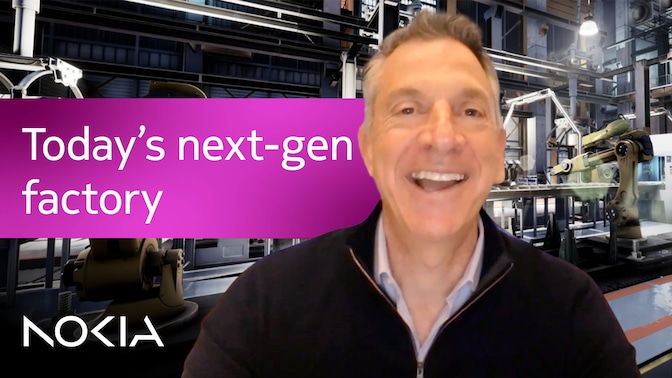Today’s next generation factory
David de Lancellotti, Vice President of Enterprise Campus Edge Business at Nokia, talks private networks and the benefits to industry.
Today’s next generation factory
AI, private 5G, and edge computing are coming together to change industry. In the latest episode of the Network Effect, David de Lancellotti, Vice President of Enterprise Campus Edge Business at Nokia, discusses how this confluence of technologies will help businesses and workers.
The future of manufacturing isn’t about tearing down, it’s about building up. The next generation factory is already taking shape, fueled by private wireless networks, AI-driven automation, and digital twins that make uptime a “five nines” reality (99.999%).
“We’re not saying the old way was broken,” explains David de Lancellotti of Nokia. “But let’s be honest - unproductivity eats into your margins. Your competition isn’t waiting, and neither should you.”
De Lancellotti knows what it takes to modernize without starting from scratch. In brownfield settings, Wi-Fi and private 5G now coexist to provide the connectivity backbone for Industry 4.0. It’s this hybrid model that enables real-time analytics, predictive maintenance, and next-gen applications without massive overhauls.
“What sets us apart are high-leverage features like AI-driven insights for quality control and preventive maintenance,” he says. “This is about fixing problems before they occur and keeping operations running without interruption.”
And then there are digital twins, virtual replicas that are borne out of big data collected by IoT and sent via 5G to edge computing platforms. These twins allow engineers to test and iterate without real-time risk. From autonomous mining to aircraft inspections, these real-world deployments are already changing the game.
But for De Lancellotti, the true revolution isn’t just technological - it’s human. “The future is going to be about technology, sure. But it’s the worker at the center of the next industrial revolution that’s most important.”
By 2030, de Lancellotti predicts no new factory will be built without AI, private 5G, and edge computing. The smart factory isn’t coming. It’s already here. And it’s built around both machines and the people who run them.



